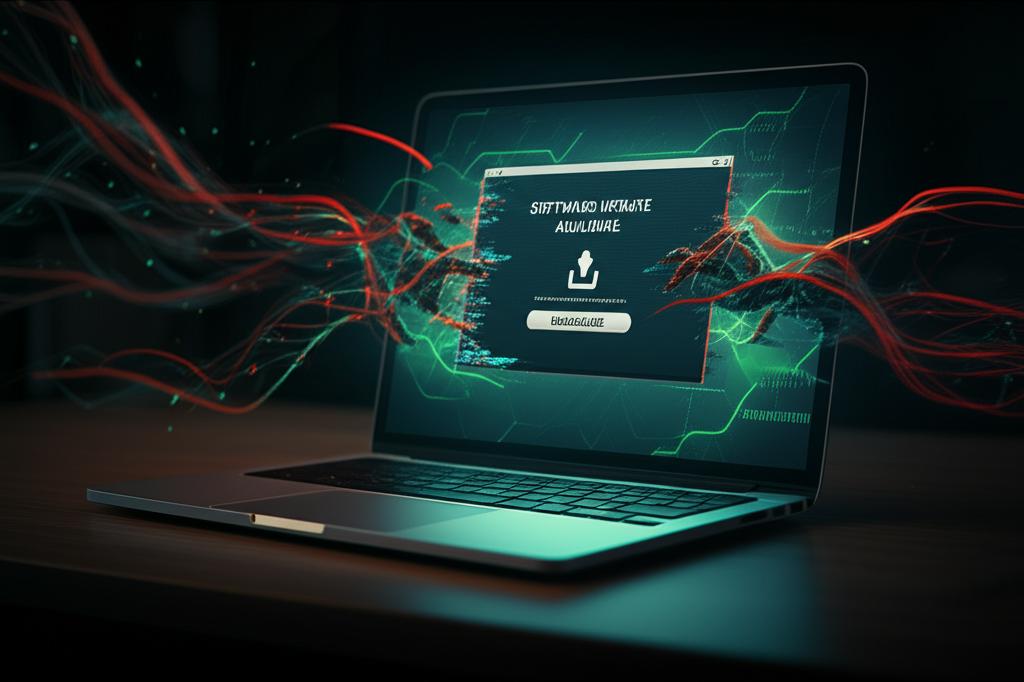Beware: The Deceptive Threat of FakeUpdates Malware Exposed!
Unmasking the Deceptive Danger of FakeUpdates Malware
In the vast and often treacherous landscape of the internet, a seemingly harmless notification can conceal a profound threat. We’re talking about FakeUpdates malware – a pervasive and insidious form of cyberattack that preys on user trust by impersonating legitimate software updates. This isn’t just about an annoying pop-up; it’s a sophisticated method criminals use to infiltrate systems, steal data, and unleash further malicious payloads. Understanding how FakeUpdates malware operates is your first line of defense in safeguarding your digital life.
What Exactly is FakeUpdates Malware?
FakeUpdates malware, also known as ‘update scams’ or ‘drive-by download’ malware, tricks users into downloading and executing malicious files under the guise of an essential software update. Instead of providing the promised security patch or feature enhancement, these fake updates deliver Trojans, ransomware, information stealers, or other harmful programs directly onto your computer. They often mimic updates for popular browsers like Chrome or Firefox, Flash Player, Adobe products, or even system-level operating system updates, making them incredibly difficult for the average user to distinguish from genuine notifications.
How FakeUpdates Malware Spreads Its Malice
The distribution methods for FakeUpdates malware are diverse and constantly evolving, leveraging various social engineering tactics to ensnare victims:
- Malicious Advertisements (Malvertising): Cybercriminals inject malicious code into legitimate ad networks, leading users to deceptive landing pages.
- Compromised Websites: Legitimate websites can be hacked to host fake update prompts or redirect users to malicious sites.
- Phishing Emails: Emails designed to look like official communications from software vendors or IT departments containing links to fake update download pages.
- Drive-by Downloads: Simply visiting a compromised website can sometimes initiate the download of a fake update without explicit user interaction.
- Browser Notifications: Some websites trick users into allowing push notifications, which are then abused to display persistent fake update alerts.
The Grave Dangers Posed by FakeUpdates Malware
The consequences of falling victim to FakeUpdates malware can be severe and far-reaching:
- Data Theft: Sensitive personal information, login credentials, and financial data can be stolen.
- Ransomware Infection: Your files can be encrypted and held hostage for a ransom payment.
- System Compromise: Your computer can become part of a botnet, used for DDoS attacks, or serve as a remote access point for further criminal activities.
- Further Malware Proliferation: FakeUpdates often act as a ‘dropper,’ downloading and installing additional malware onto your system.
- Performance Degradation: Your computer may slow down, crash frequently, or exhibit unusual behavior.
Spotting a Scam: How to Identify Fake Updates
Vigilance is key. Here are telltale signs that an update prompt might be FakeUpdates malware:
- Unexpected Pop-ups: If an update prompt appears suddenly, especially outside of your browser or operating system’s official update mechanism, be suspicious.
- Browser-Based Alerts for OS/Application Updates: Your browser should not be prompting you to update your operating system or other desktop applications.
- Poor Grammar or Spelling: Malware often contains linguistic errors.
- Unusual Download Sources: Always check the URL of the download source. Genuine updates come directly from the official vendor’s website (e.g.,
google.comfor Chrome,microsoft.comfor Windows). - Sense of Urgency: Prompts that demand immediate action and threaten dire consequences if you don’t update can be a red flag.
Fortify Your Defenses: Prevention Strategies Against FakeUpdates Malware
Proactive measures are your best defense against FakeUpdates malware:
- Update Through Official Channels: Always update your operating system and applications directly through their official update mechanisms, not through pop-ups or third-party websites.
- Use Reputable Security Software: Install and maintain a powerful antivirus and anti-malware solution with real-time protection.
- Employ Ad Blockers: Many ad blockers can prevent malvertising from displaying fake update prompts.
- Be Skeptical of Unsolicited Pop-ups and Emails: If it looks too urgent or too good to be true, it probably is.
- Backup Your Data: Regularly back up your important files to an external drive or cloud service. This can be a lifesaver if ransomware strikes.
- Educate Yourself: Stay informed about common cyber threats and social engineering tactics.
Action Plan: Removing FakeUpdates Malware from Your System
If you suspect you’ve been infected by FakeUpdates malware, act quickly:
- Disconnect from the Internet: This prevents the malware from communicating with its command-and-control server or spreading further.
- Boot into Safe Mode: This starts your computer with only essential programs, potentially preventing the malware from running.
- Run a Full System Scan: Use your trusted antivirus/anti-malware software to perform a comprehensive scan and remove all detected threats.
- Check for Unwanted Programs: Go to your system’s ‘Add or Remove Programs’ (Windows) or ‘Applications’ (macOS) and uninstall any suspicious or recently installed software.
- Reset Browsers: Reset your web browsers to their default settings to remove any malicious extensions or altered configurations.
- Change All Passwords: Especially for critical accounts like banking, email, and social media, assuming they might have been compromised.
- Restore from Backup: If your files are encrypted by ransomware, you may need to restore from a clean backup.
- Seek Professional Help: If you’re unsure or unable to remove the malware, consult a cybersecurity professional.
Conclusion
FakeUpdates malware remains a significant and evolving threat in the digital realm. Its success hinges on deception and exploiting human trust. By understanding its mechanisms, recognizing its telltale signs, and implementing robust prevention strategies, you can significantly reduce your risk of becoming a victim. Stay vigilant, stay informed, and always prioritize official update channels to keep your systems secure.







